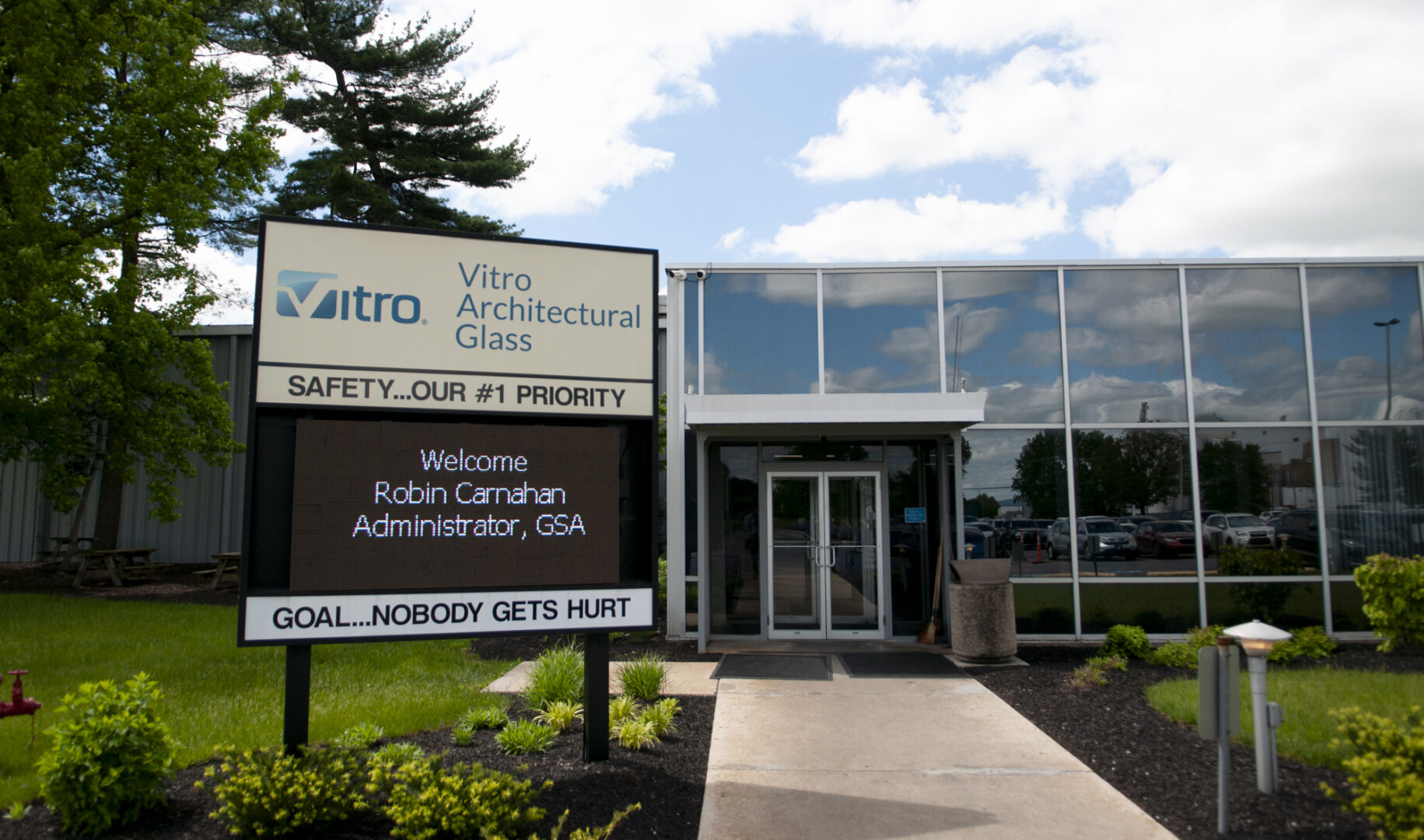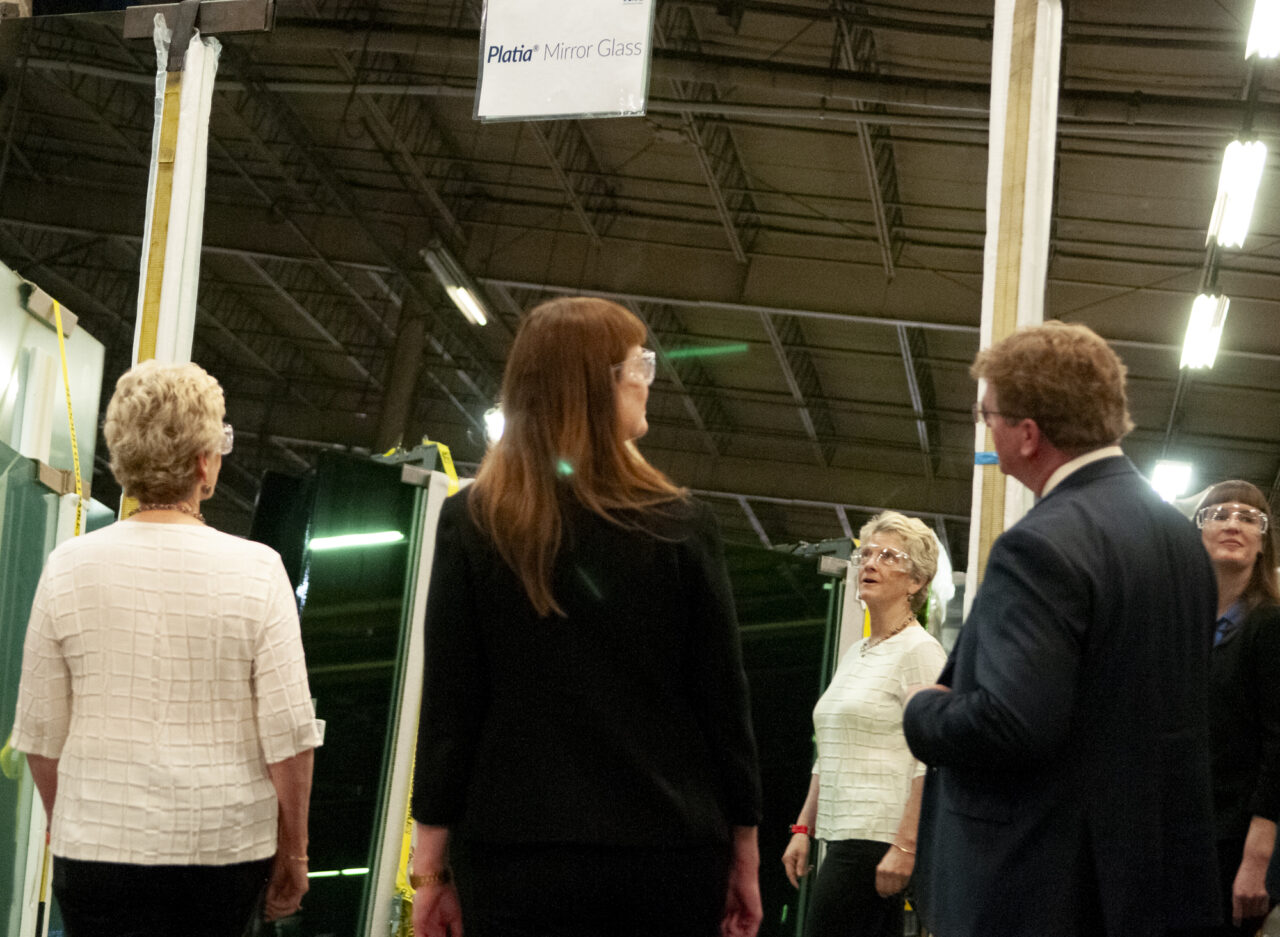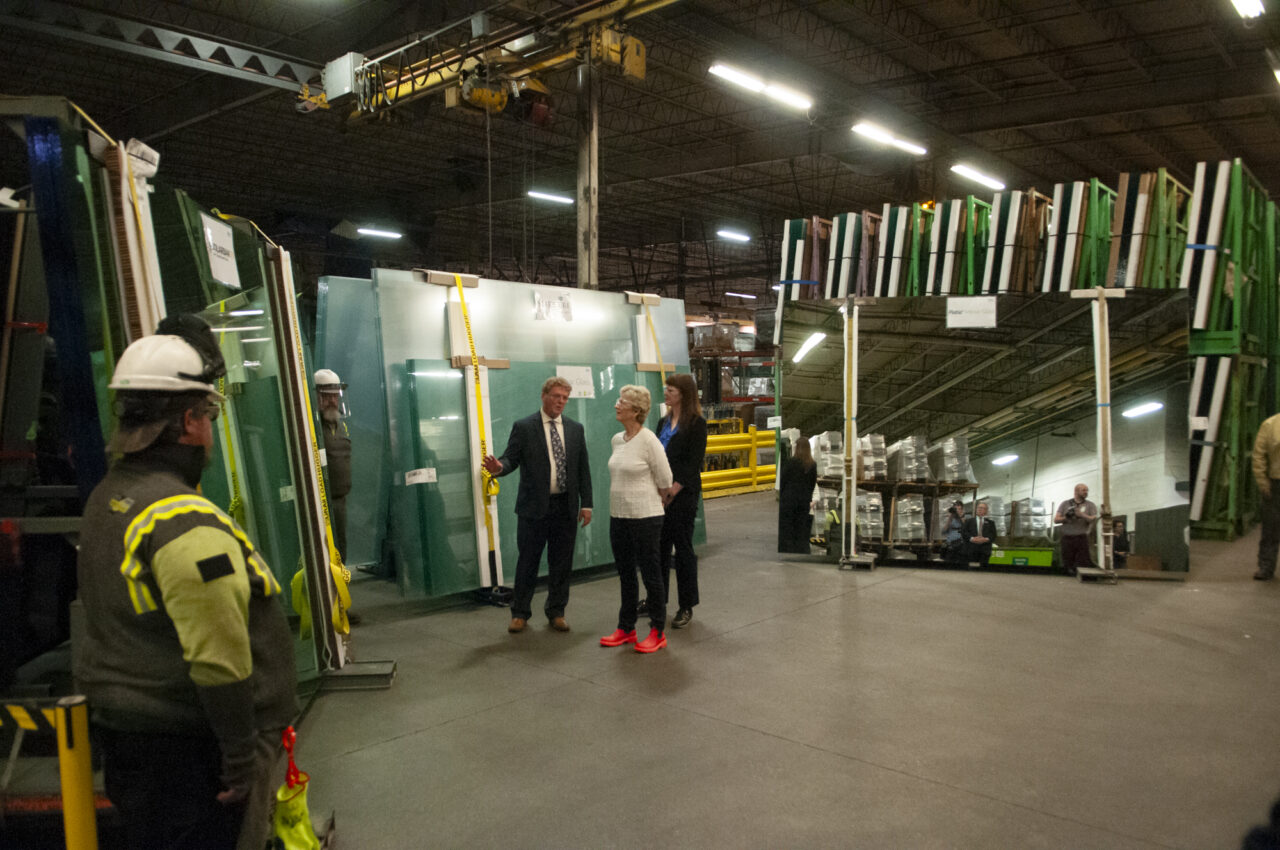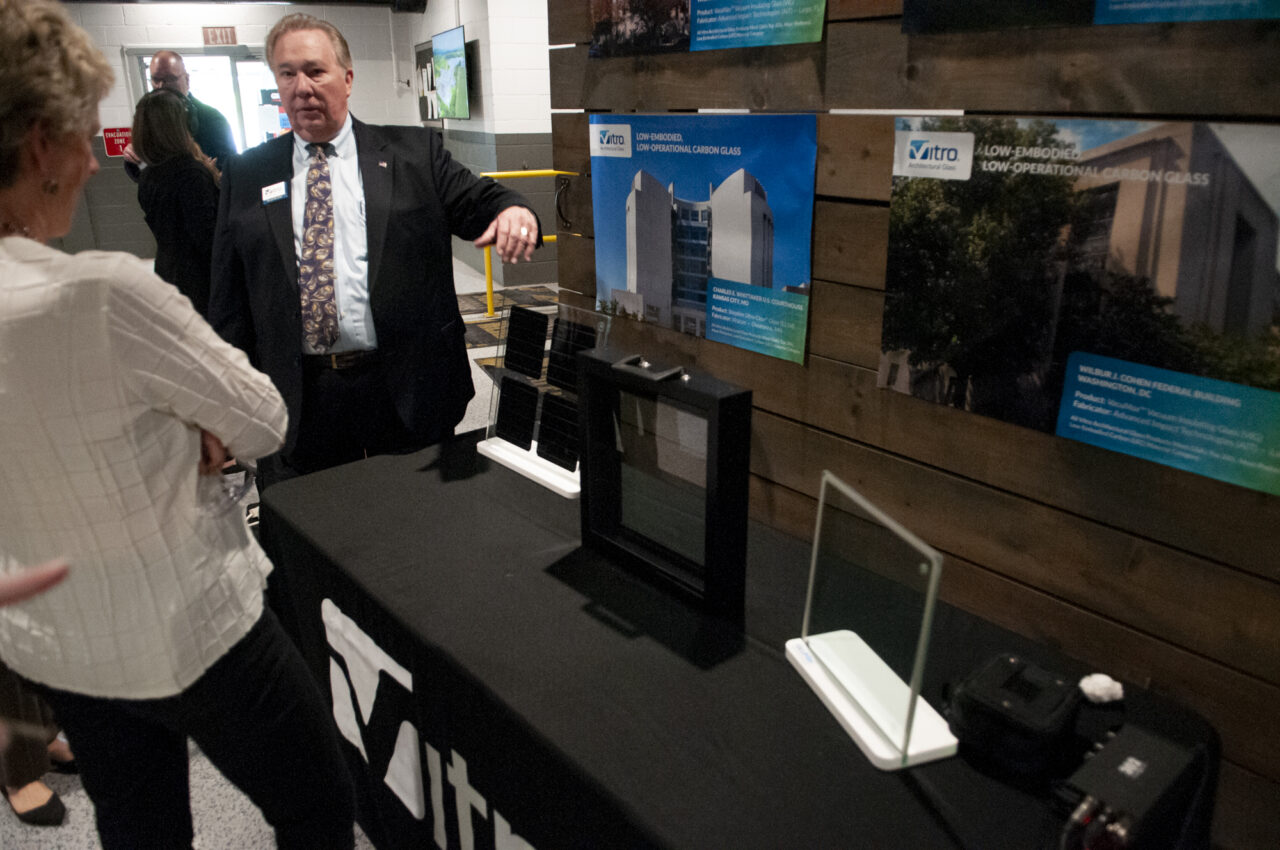
Vitro Architectural Glass in Carlisle on May 16, 2024. (Jeremy Long - WITF)


Vitro Architectural Glass in Carlisle on May 16, 2024. (Jeremy Long - WITF)

Vitro Architectural Glass in Carlisle on May 16, 2024. (Jeremy Long - WITF)

Robin Carnahan, GSA Administrator, Jeanie Romer, deputy assistant administrator for pollution prevention U.S. EPA and Paul Bush, vice president of technical services sustainability and government affairs at Vitro Architectural Glass, look at mirrored glass produced at Vitro Architectural Glass in Carlisle on May 16, 2024. (Jeremy Long – WITF)
The Biden Administration is highlighting a glass manufacturer in Pennsylvania for taking steps to reduce planet-warming emissions.
Officials with the General Services Administration and Environmental Protection Agency toured the Vitro Architectural Glass plant near Carlisle to mark the one-year anniversary of a pilot program that created more climate-friendly standards for building materials.
As part of the pilot, GSA is spending more than $2 billion from the federal climate measure–the Inflation Reduction Act–on glass, asphalt, concrete, and steel with lower embodied carbon. That means the materials are responsible for less emissions over their life cycle than industry norms.
The Vitro plant in South Middletown Township, Cumberland County uses oxy-fuel technology to reduce its natural gas use by 20%. The method involves burning gas in a higher concentration of oxygen, instead of natural air, to increase efficiency. That cuts carbon and other greenhouse gas emissions such as nitrogen oxide when making glass. Glass is made by heating a mixture of mostly sand to very high temperatures.
Vitro, formerly PPG Glass, has been working to improve efficiency since before the pilot was announced last year. Vitro says all its glass products produce a carbon dioxide equivalent that is 13% lower than the National Glass Association’s industry standard.
GSA Administrator Robin Carnahan said using this glass for federal projects is important for influencing industry practices.
“If government can show that this is possible–because we have a lot of buying power–and say ‘This is what we’re looking for,’ then industry steps up and they have it available not just for government buyers but for everyone,” Carnahan said.

Paul Bush, vice president of technical services sustainability and government affairs at Vitro Architectural Glass, Robin Carnahan, GSA Administrator and Jeanie Romer, deputy assistant administrator for pollution prevention U.S. EPA look at glass at an event at Vitro Architectural Glass in Carlisle on May 16, 2024. (Jeremy Long – WITF)
Vitro glass is being used at federal courthouse projects in Richmond, Virginia and Kansas City.
Carnahan said the new standards don’t raise costs by much. She said the reason companies haven’t used these practices before is that no one had asked for it.
“Over and over again, we’re hearing that from manufacturers–that, if we ask for these new kinds of products that are more sustainable, that have less emissions, that they can deliver,” she said.
Carnahan said more sustainable materials are good for saving taxpayers money. She said the cost of installing quad-pane windows in a facility in Denver, Colorado was recovered in two years because of energy bill savings.
Paul Bush, Vitro’s vice president of technical services sustainability and government affairs, said the return on investment is both financial and environmental.
“When they become more energy efficient, obviously they use less energy, so they’re putting less carbon into the environment,” Bush said.
Bush said Vitro is planning to add about 200 jobs between its Carlisle and Meadville plants as they ramp up production of glass for solar energy generation.

Brad Boone as Sales Director, Advanced Glazings and Architectural Government Sales Liaison at Vitro Architectural Glass in Carlisle explains the different types of glass the plant makes to Robin Carnahan, GSA Administrator on May 16, 2024. (Jeremy Long – WITF)
The visit came during the Biden Administration’s “infrastructure week,” a push to highlight federal investments from the Bipartisan Infrastructure Law, the Inflation Reduction Act, the CHIPS and Science Act, and the American Rescue Plan.
As of April, the administration says there have been $16.7 billion in public investments in Pennsylvania for clean energy, infrastructure and manufacturing.
That includes $1.9 billion for expanding affordable high-speed internet and $242 million for replacing lead pipes.
It’s up to states to develop programs to distribute a lot of that money, and those have been slow to get started. For example, $259 million is available for Pennsylvania Department of Environmental Protection to fund rebates for home energy efficiency upgrades, but the Shapiro Administration has not yet opened the program.
StateImpact Pennsylvania is a collaboration among WITF, WHYY, and the Allegheny Front. Reporters Reid Frazier, Rachel McDevitt and Susan Phillips cover the commonwealth’s energy economy. Read their reports on this site, and hear them on public radio stations across Pennsylvania.
(listed by story count)
StateImpact Pennsylvania is a collaboration among WITF, WHYY, and the Allegheny Front. Reporters Reid Frazier, Rachel McDevitt and Susan Phillips cover the commonwealth’s energy economy. Read their reports on this site, and hear them on public radio stations across Pennsylvania.
Climate Solutions, a collaboration of news organizations, educational institutions and a theater company, uses engagement, education and storytelling to help central Pennsylvanians toward climate change literacy, resilience and adaptation. Our work will amplify how people are finding solutions to the challenges presented by a warming world.